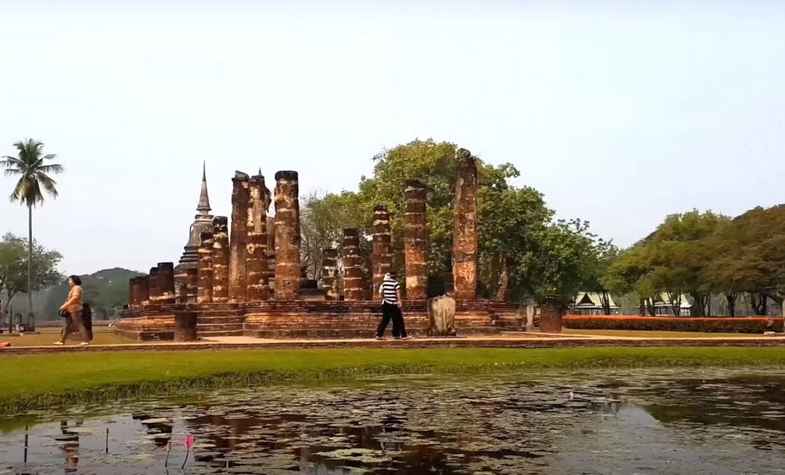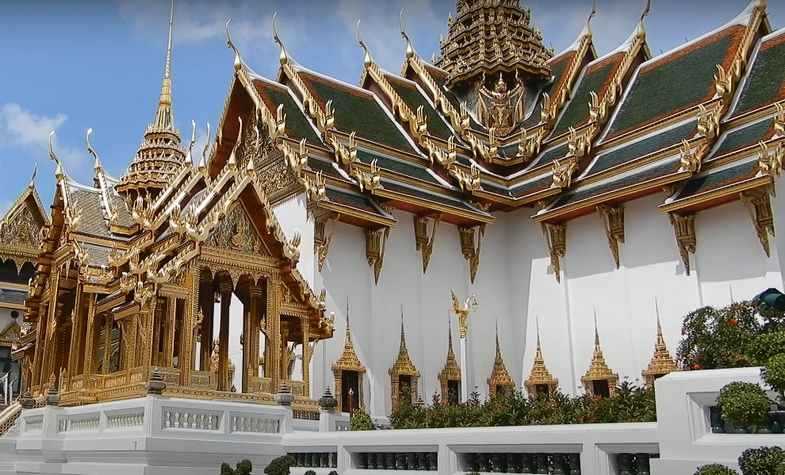The Thai people have a rich and diverse cultural heritage that draws from India, China and other Southeast Asian nations. Their ancestors came from the Altai mountains in China about 4500 years ago and migrated southward to their current homeland. They founded a Buddhist kingdom called Sukhothai in northern Thailand in 1238 and took over the declining Khmer Empire (13th - 15th century).
Sukhothai Kingdom
Thai groups began to migrate to Thailand in the eighth century. In 1238, they drove out the Khmer lords and established a new state, calling it the Sukhothai period and the king Ramkhamhaeng. The king allowed his army to invade Khmer territory as far as the south of Nakhon Si Thammarat. Besides, he is also the person who created the first Thai alphabet and taught people to learn about artistic values. In 1300, Ramkhamhaeng died, signaling the decline of the Sukhothai Empire. The new Ayutthaya state, born in 1378, occupied Sukhothai, becoming the most powerful state in the history of the kingdoms of Thailand.

Sukhothai Historical Park Zones Thailand
Ayutthaya Kingdom
In the Ayutthaya state, the monarch is the highest authority, respected, and regarded as the lord of living beings. There was a clear class distinction between nobles and slaves. The king also used war as a way to expand his power and expand the national territory. After the overthrow of Sukhothai, Boromaraja II continued to occupy the Khmer city of Angkor Thom, forcing the Khmer to move to Phnom Penh.
In 1569, Ayutthaya became Burmese territory but was declared independent by Prince Naresuan in 1584, expelling all Burmese from the country. Ayutthaya prospered and attracted the attention of Westerners who arrived in the country to gain the privilege of harboring and trading. Not long after that, the Burmese army staged an attack that burned the capital of Siam, causing Ayutthaya to gradually collapse.
The period 1763 - 1782
When the Ayutthaya kingdom fell, a general named Taksin, a Han native, gathered an army to retake the city from the hands of the Burmese. Although the resistance was successful, as Ayutthaya was too devastated, Taksin decided to move the capital to Thonburi. From there, the umbrella carried out the Burmese attacks in the north that took place in 1774, occupied Chiang Mai in 1776, and moved towards reunification of Thailand.
In 1782, on the occasion of Taksin's army to pacify rebellions in Cambodia and Laos, a coup broke out, leaving him deposed. Rama, I ascended the throne and founded the Chakri dynasty as it is today.
Founding of the Chakri Dynasty
After a successful coup, Phra Phutthayotfa Chulalok, also known as Rama I, took control of Siam, moving the capital to the Chao Phraya River, which is the present city of Bangkok. During the Chakri dynasty, Siam was growing stronger, the Burmese attacks were repelled, Thailand developed more and more stable.
While Rama I is remembered as a king whose work in strengthening the country, Rama II created a country with a unique culture in Thailand. He translated Buddhist prayers into Thai and established several masses. After his death, his son Nangklao (Rama III) became happy, continued his fight against the war of aggression, signed treaties with Western countries to expand foreign relations and trade cooperation.

The struggle for independence
In 1851, King Mongkut (Rama IV) ascended the throne, replacing his deceased brother. The king reforms the country to get closer to the development of new science and technology. The treaties were signed with the UK to continue diplomatic and trade cooperation but still determined to keep the independence of the Golden Temple country under a lot of pressure.
Chulalongkorn (Rama V) came to power in 1868, following the views of the previous kings, he formed a professional army and removed power from the hands of local elites to retain power. stronger. Besides, the king continues to modernize Thailand with the modern technology of the world, eliminating the empire of slavery and prostitution. Despite going through war with France and having to negotiate and sign a treaty with England, thanks to skillful diplomacy, Rama V still ensures the independence of his country. This is also the pride of every Thai people when their country never has to become a colonial country.
The monarchy in World War
During World War I and II, three kings took power in Thailand were King Vajiravudh (Rama VI), who became king in 1910, King Prajadhipok (Rama VII) and Ananda Mahidol (Rama VIII) became king at a very young age, assisted in ruling the country by Prime Minister Phibun. Also during this period, the land of the Golden Temple standard changed from an authoritarian to a constitutional monarchy. After a long period of authoritarian rule, the year 1992 ushered in a new era of democracy.
Present
After the war ended, Rama VIII returned to Thailand from Switzerland in 1945 to rule. Six months later, he was found shot dead in bed. Ananda Mahidol's brother Bhumibol Adulyadej became the second monarch of the Chakri dynasty, continuing to rule for 70 years.
Under this rule, Rama IX received love from the people throughout the country. He focuses on developing the country through cultural traditions and a love of art, helping people to have a better life. Bhumibol Adulyadej's wife, Queen Sirikit, has also won people's hearts through activities to support the rural and poor people. The two have only a son, the crown prince.
Vajiralongkorn has crowned crown prince at the age of 20. After his father's death, the Thai Legislative Council recently succeeded Vajiralongkorn to the throne, Thailand's Prime Minister Prayuth Chan Ocha also confirmed that Vajiralongkorn would become the new king. However, Vajiralongkorn did not accept the invitation of the Legislative Assembly, saying he needed time to prepare before being proclaimed king. During that time, General Prem Tinsulanonda held the role of regent.
After a period of mourning, Vajiralongkorn accepted the Legislative Council's invitation to become Thailand's new king on the night of December 1, 2016, local time, becoming Rama X at the age of 64. The oldest king in the history of the Golden Temple when crowned. He continued to follow his father's path, defending the sustainable development of the country, enhancing the cultural and ethnic values, creating a prosperous life for the people, and not letting it become a land. colonial country.
Besides taking the throne at an old age, Vajiralongkorn is also known as a polygamous king. He has been married four times and conferred the royal title of Sineenat. Becoming the first king to have a concubine after many years Thai kings practiced monogamy. Besides, under King Rama X, strict rules were put in place, such as not to defame or defame the royal family, otherwise, it would be severely punished. That is also the reason no suspicions are surrounding the king's decisions.
Maybe you like our Laos tours: Highlights of Thailand and Vietnam Holidays | Magnificent Vietnam, Laos & Thailand Tour 2023 / 2024 | Spectacular Thailand Vietnam and Cambodia Tour

